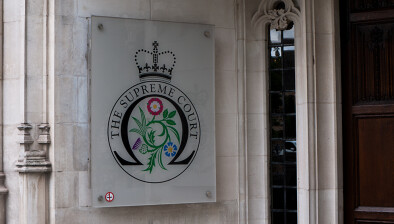James Lloyd: Homeowners are being caught out by trust deeds

James Lloyd
James Lloyd, partner at Harper Macleod, writes on how people are being caught out by the requirement for homeowners to remortgage or sell their property at the end of a trust deed to realise the capital.
Scotland offers several statutory debt consolidation and payment schemes for those who find themselves overwhelmed by unsecured debt built up on store cards, credit cards or through personal loans.
One such scheme is a trust deed, designed to strike a fair balance between the needs of the debtor and maximising payment to creditors. The process ought to be completely transparent but in recent months we have advised on several cases involving older style trust deeds with an unforeseen sting in their tail.
A trust deed is a voluntary debt management arrangement entered into with the agreement of the majority of the unpaid creditors. The process is administered, in return for payment of a fee, by an insolvency practitioner who acts as trustee to take control of the debtor’s assets for distribution to the creditors. Modern trust deeds typically involve monthly payments over a four-year period but historic trust deeds applied for much longer.
If the trust deed arrangement meets certain criteria it will become a “protected trust deed” which prevents creditors from pursuing the debtor for payment directly.
At the end of the trust deed period, as long as the debtor has not missed any monthly payments or accrued any new debts, they are discharged with a clean slate.
For homeowners, there is a significant downside to entering into a trust deed as any equity held in property owned wholly or partly by the debtor requires to be paid over to the trustee. This obligation is often only triggered at the end of the trust deed period so instead of the trust deed expiry bringing freedom from debt, it is forcing people to sell their homes or resulting in sequestration proceedings ie bankruptcy.
In theory, a debtor can request that the equity in their house does not form part of the agreement with creditors but it is unlikely creditors would agree to ignore a pot of money that could help repay outstanding debts.
This equity release clause is legal and, in most cases, it will have been made very clear to the debtor in writing when the trust deed was entered into. Agreement about when and how the equity will be dealt with should also be recorded in writing.
However, in cases where this was not made sufficiently clear to the debtor, or not recorded in writing and forgotten, it comes as a nasty surprise at a time when the debtor expected to be debt free.
Under a typical equity release clause, homeowners are required to remortgage or sell their property at the end of the trust deed to realise the capital from it. But remortgaging may not be possible for someone with financial difficulties and depending on the housing market it may not sell quickly enough to satisfy the trustee.
If the property is jointly owned, the trustee should have obtained the consent of the other homeowner(s) before putting formal arrangements regarding the equity in place. The co-owner(s) should therefore be aware of the debtor’s obligation to find a way to release the value of the debtor’s share of the equity. However, even if they are aware and are willing to cooperate, the joint owner’s financial position may have an impact on the ability to remortgage or they may refuse to give permission for the house to be sold.
Where it is not possible to produce the funds, the trustee is entitled to raise a petition for sequestration or, in the case of a jointly owned property, to force a sale with the debtor’s share of the equity released going to the trustee to apply to the payment of debt.
Some trustees may allow alternative options, such as an extension to the trust deed period for additional payments to be made, or accepting cash from another legitimate source such as a family member, but the ultimate risk is that the house will need to be sold and/or the debtor will be sequestrated – the sting in the trust deed’s tail.
A trust deed containing an equity release clause should not have been recommended as an appropriate debt consolidation strategy in circumstances where there is equity tied up in property with no realistic prospect of it being liquidated at the end of the trust deed period.
Unfortunately, the evidence suggests this best practice might not have been followed in every case and the requirement to pay sometimes significant sums from equity in property is catching people out.

- James Lloyd is a partner at Harper Macleod. You can view his profile here. This article first appeared in The Scotsman.









